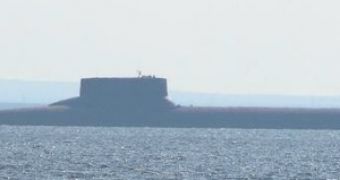The worst Russian submarine incident since the 2000 explosion of a torpedo killing 118 persons aboard took place this Saturday. Now, more details of the tragedy have been made public. It seems that the event that led to the death of 20 persons and injuring of another 21 was caused by a false alarm that triggered the emission of poisonous fire-extinguishing gases while sealing shut the doors of the affected compartments. The nuclear engine of the submarine remained intact.
The “Nerpa” Shark-class nuclear-powered submarine was swimming in the waters of the Sea of Japan when the tragic event occurred. With the exception of three people, all the affected crew members were civilian scientists aboard for inspection purposes related to the performance of the vehicle. As a matter of fact, out of the 208 people present inside the submarine during the event, only 91 were actual trained staff, which might explain the proportions of the disaster. The others were experts from the area the engine of the submarine and the vehicle itself were designed and built.
There are strict rules and measures that must be respected in such an environment, especially in emergency cases, and there's little to rely on. As Igor Kurdin, the former commander of a Russian nuclear missile submarine, says, "Even if you are the president of the country present on a submarine, you can't rely on your security detail to save your life in a fire, because you need to be able to save your own life by using the rescue equipment properly and quickly".
It seems the regular warning light and sound signals that usually precede this kind of events malfunctioned, further enhancing the catastrophic results, believes Andrei Frolov, a researcher from the Center for Analysis of Strategies and Technologies in Moscow. "The Amur Shipbuilding Plant in Komsomolsk-on-Amur was testing this new submarine, the first one it produced in 13 years," shared Frolov, cited by LA Times.
"Standing virtually idle for more than a decade couldn't help but affect the expertise and skills of the shipbuilders, which must have caused this technical fault. I am sure many people were not prepared for what happened. The accident happened at around 8:30pm, and some of the crew could even be sleeping already. I am sure the panic ensued, when the doors of the compartments were automatically sealed and the gas was emitted, and for the civilian specialists that must have been too much of a shock to handle it properly.”

 14 DAY TRIAL //
14 DAY TRIAL //